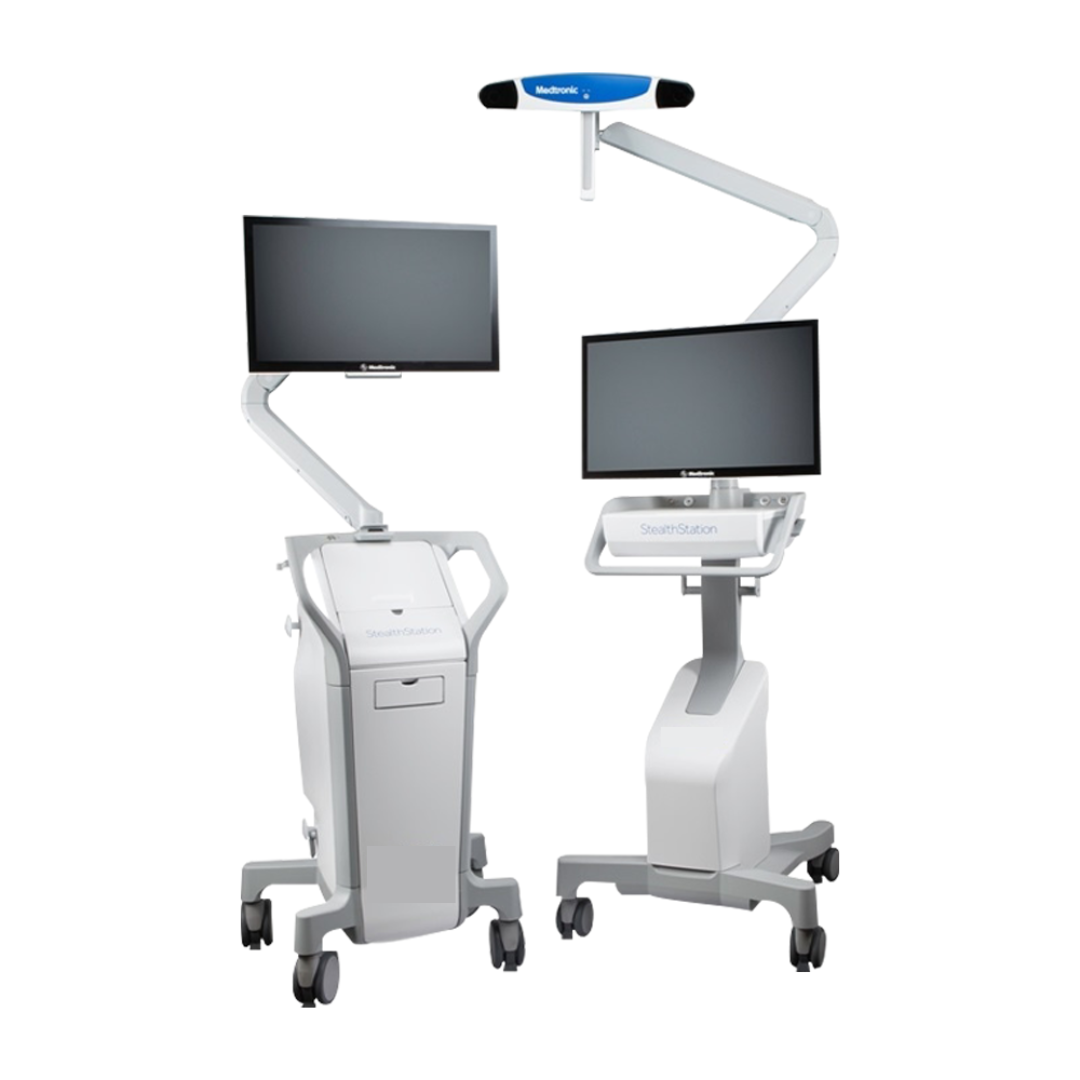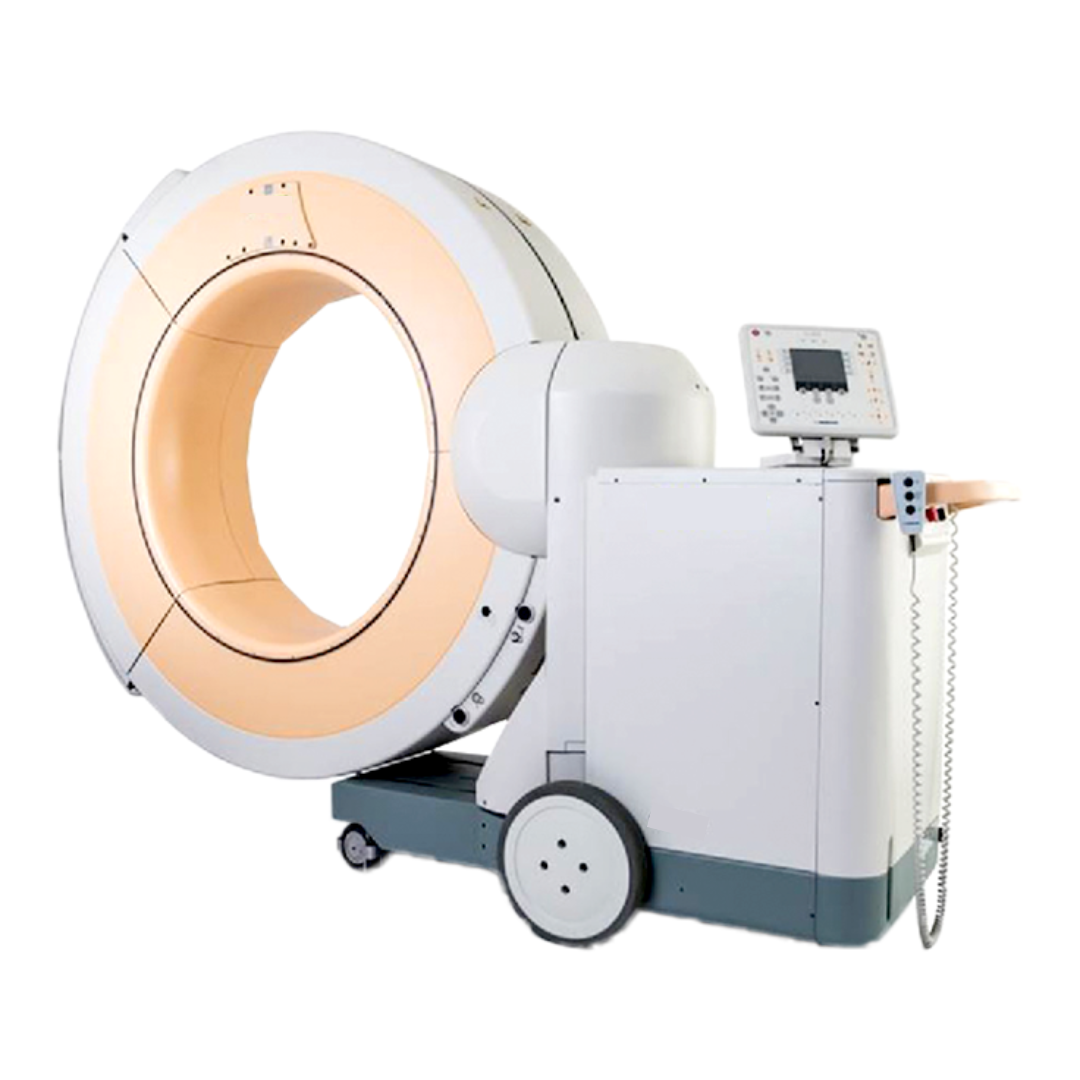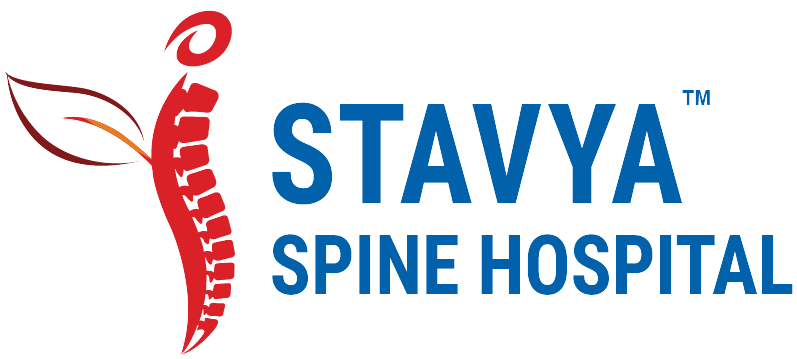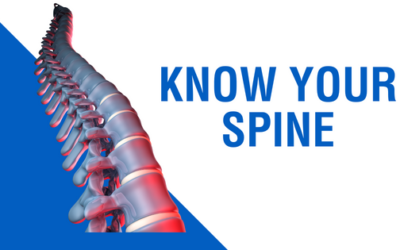Advances in spine surgery technology have been vast with changes in operative techniques, approaches, implants, and imaging systems.
The modern intraoperative navigation system is reliable and improves the safety of complex spinal surgery over the past ten years.
As we know, there is a high incidence of screw misplacement during a spinal surgical procedure due to distortion of normal anatomy.
The spinal surgical procedure is performed with the patient in a prone position, but pre-operative images are acquired from a patient in a supine position. The change in the position of the spine may be one of the possibilities for the misplacement of implants.
In that case, an Intraoperative CT scan allows for more precise and predictable surgery.
Intraoperative navigation thus makes complicated surgeries easier, and safer and helps to achieve desired outcomes.

Parts of intra-operative navigation system
The navigation system consists of a computer, monitor, and an infrared camera. The camera releases infrared light which is reflected off the reference frame.
There are two parts of any navigation system: an image acquisition unit and a referencing system.
The reference frame is used to determine the patient’s 3D orientation in space. However, the patient’s orientation cannot be determined until the registration process is completed.
The reference frame is attached to the spinous process or any fixed bony part. After the completion of the image acquisition and automatic registration procedure, the surgical instrumentations are registered to the navigation tracker.
Once the instrumentation is complete, the 3D CT scan machine can acquire the position of the implants in the spine.
The imaging system delivers a fast and precise 3-D representation of a patient’s anatomy during surgery. The guidance system then uses this 3-D image to ensure that implants, such as screws, are placed in the spine with millimeter precision.

CLINICAL APPLICATIONS
Minimally Invasive Surgery
A minimally invasive spine surgery (MISS) is likely to have much higher misplacement rates. Navigated spine surgery helps the surgeon to place an appropriate level screw fixation. Instrumentation in obese patients and osteoporotic patients is difficult, but navigation makes it easier in such conditions.
Spine Deformity
Cervical Spine
Spinal Tumors
Navigated surgery gives a three-dimensional real-time imaging of the area of interest and defines the extent of the tumor, which allows adequate removal.
The current navigation systems are user-friendly and have high precision. It provides patient safety and reduces hospital stays. Apart from the accuracy of instrumentation, navigation has additional benefits that include planning effective osteotomy, ensuring adequate decompression, and deformity correction, providing clear and safe surgical excision of tumors, and enabling clear vision in complex deformities.
Improved accuracy with the use of navigation has been demonstrated.
The system was rated as excellent for ease of use by all faculties using the system.
Navigation can always be used as an effective adjunct, but can never substitute clinical acumen, human practical skills, and knowledge.


